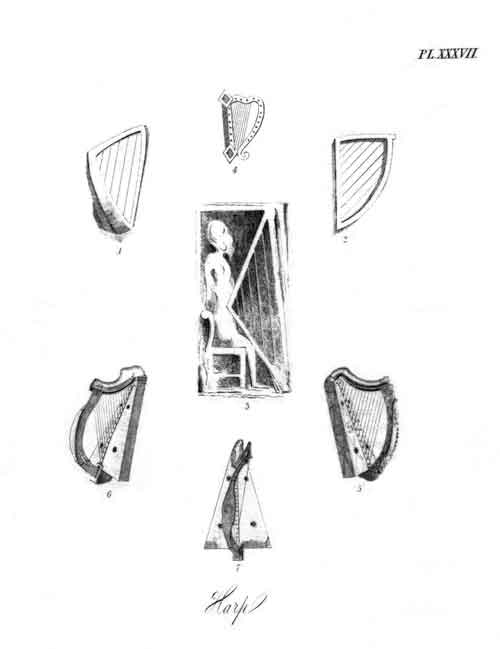Sir John Graham Dalyell was a prolific writer on antiquarian and natural history matters. Born in 1775 into the family of Dalyell of the Binns in Linlithgowshire he succeeded to the baronetcy of Binns on the death of his elder brother in 1841. He had initially studied law and was admitted to the Faculty of Advocates of Scotland in 1797. His active practice as a barrister was somewhat lukewarm and he seems to have preferred spending most of his time in the Advocates library engaged in studying its large collection of manuscripts and volumes connected with the history of Scotland. Within two years of his admission as an advocate he produced his first work on Fragments of Scottish History and continued publishing on a regular basis up until his last work, his Musical Memoirs of Scotland which appeared in 1849, shortly before his death in 1851 aged 76 years.

The plate from Dalyell, bound between pages 252 and 253.
(Please click on the image to view the scan in its original size)
The book is now rare and not easy to find so adding his section on the harp to the ‘library’ fits with this website’s aims of making the hard to find out of copyright source materials more easily available. The section, which runs from pages 230 to 254 of that work covers his comments on the history of the harp in Scotland along with some passing references to Ireland as well. After page 254 he moves onto some discussion of harps elsewhere in the world, which although interesting are not really relevant to wire strung harps.
The Musical Memoirs of Scotland eschews the more romantic historical approach which tended to be the normal style of ‘historical’ writing in that period and possibly reflecting Sir John’s legal training tends to carefully lay out the evidence, much of it derived from the original manuscripts consulted by him, complete with its firmly referenced provenance. Of course this does not mean he is immune from being overtaken by modern research or totally free from errors although these are few and where they do occur they tend to be either typographical or very occasional and obvious lapses in memory.
For example, the reference on page 233 to payments from the Treasurer’s accounts which he attributes to the 14 April 1502 is a clear slip and should be 1501. Likewise anybody following up the footnote number 3 on page 245 will find it easier to locate the work referenced if they search under the authors name as William Shaw Mason rather than just Shaw. In terms of memory the passage of over forty years since the event probably accounts for his slip in attributing the repair of the two Lude Harps to Mathew Hardie, (the fiddle maker) in 1806 when the contemporary evidence states that it was undertaken by Muir Wood & Co, the Edinburgh musical instrument makers. Indeed, albeit a member of a Lowland family, Sir John was a member of the Highland Society of Scotland and his observation of the two harps probably occurred as part of the occasion when after being restrung with wire the ‘Queen Mary’ Harp was played to members of the society on their visit to Muir Wood by the harper John, (or Joseph), Elouis.
Please follow this Catalogue link to return to the author index on the Library page.